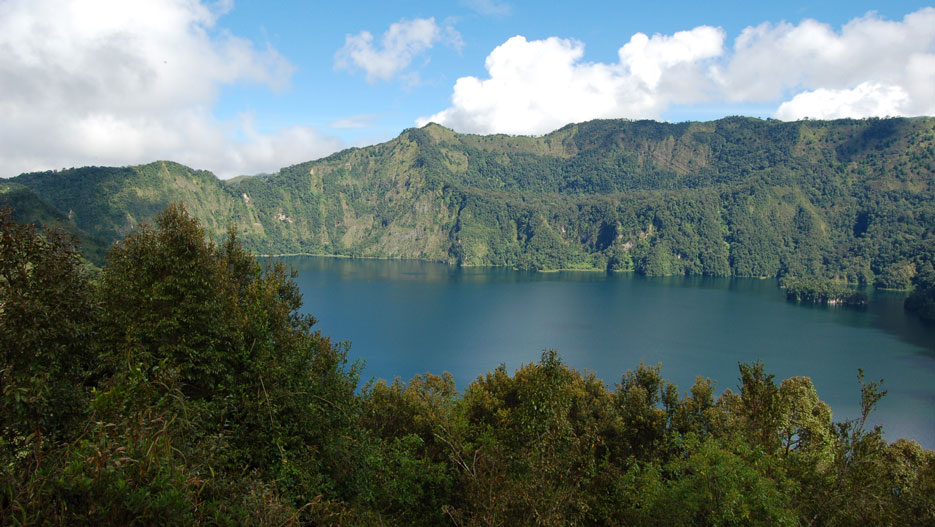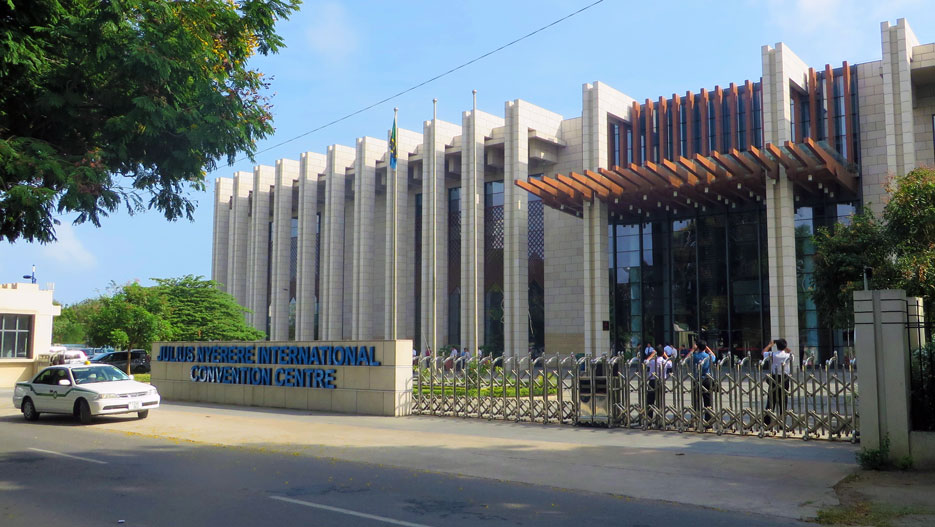Tanzania Tourism: Interview with Devota Mdachi from Tanzania Tourist Board
Devota Mdachi gives an overview of the tourism sector in Tanzania. In 2015, the country received around 1.1 million tourists and hard currency receipts from tourism were estimated at approximately USD 2.5 billion, which makes it the country’s largest foreign currency generator.
Interview with Devota Mdachi, Managing Director of Tanzania Tourist Board (TTB)
You recently underwent a rebranding of Tanzanian tourism. You came up with a new tagline: “Tanzania, the soul of Africa”. Why was it chosen and what message do you think it conveys about the country?
We decided to rebrand Tanzania, from “Tanzania, the land of Kilimanjaro, Zanzibar and the Serengeti”, to “Tanzania, the soul of Africa“, because we believe that everything started in Tanzania. If you look at our tourist attractions, Mount Kilimanjaro, is the highest in Africa; if you look at Ngorongoro Crater, it is known as the Eden of Africa; if you look at the Selous Game Reserve, we have the largest game reserve in the world; if you look at Lake Tanganyika, it is the longest and deepest in the world, and if you look at the Tanzanian people themselves, they are considered among the most hospitable people in Africa. Therefore, we believe that the whole essence of Tanzania being the ‘soul’ entails that everything began here, which is why we decided to call Tanzania “the soul of Africa.”
In 2015, the country received around 1.1 million tourists and your hard currency receipts from tourism are estimated at approximately USD 2.5 billion, which makes it your largest foreign currency generator. What are your main source markets today? I believe this includes the UK, the US and Italy. But are you also looking at new markets, and where are you aiming at in terms of the emerging economies, including BRICS (Brazil, Russia, India, China and South Africa)?
We decided to rebrand Tanzania, from “Tanzania, the land of Kilimanjaro, Zanzibar and the Serengeti”, to “Tanzania, the soul of Africa”, because we believe that everything started in Tanzania.
As you said, we have the traditional markets, such as the UK, the US, Italy, France and Germany. But we are eyeing emerging markets, especially those in the Far East. There is a good deal of promotion there, and we are trying to target places such as China and the UAE. We are also targeting the African region itself, especially Southern Africa, but we are also interested in western parts of Africa. As such, we are not simply focusing on the traditional markets, as was previously the case, namely Europe and the Americas; we are currently also looking at Africa as a region, as well as the Far East.
It is interesting what you say about Africa in particular. I imagine that you are therefore looking at many new arrivals from the rest of the African region. How is that growing?
It is growing quite steadily, especially with regard to Southern Africa, i.e. South Africa, Zimbabwe, Zambia and Malawi in particular. But we are also receiving many tourists from across the border, from Kenya and Uganda, Rwanda and Burundi. They all come to Tanzania, as they know that we have something more than what they have to offer. For most Southern African countries, their main tourist attraction is wildlife, which we also have. But we have more than that. We have the mountain, we have the lakes, we have the culture and the coastline to boot – all of which makes for more tourists from across the region visiting Tanzania.

1,500 miles of coastline, mostly virgin. This is quite a country! Now, what roles does the TTB play in terms of lobbying the Tanzanian Airports Authority (TAA) and the Tanzanian Civil Aviation Authority (TCAA), in order to create incentives to ensure more airlines fly into Tanzania?
We are aware of the importance of airlines to the tourism industry, which is why we work very closely with the civil aviation and airports authorities. We hold regular meetings and there is a Tourism Facilitation Committee, of which the TTB is a member, along with civil aviation authorities. We take part in international airline exhibitions with these authorities, and whenever we do, we always try to spread the word that Tanzania is the best destination in Africa, and that airlines should fly here. There is great potential for larger volumes of passengers coming here, and airlines are showing a good deal of interest in increasing their flights to Tanzania.
We also understand that the TTB has about 60 cultural tourism enterprises, mostly located in the northern circuit of the country. But there are efforts underway to develop more of these in other parts of the country, such as in the Lakes zone, the southern tourist circuit and in the coastal areas. To what extent is there now an interest in developing cultural tourism in other circuits, other than in the northern tourist circuit?
We started the cultural tourism programme in 1996. At that time, we only had three programmes in operation, all of which were in the northern part of Tanzania. We currently have 60, and most are indeed in the North, but there are also some in other parts of the country. We have received over 90 applications from various communities, asking us to help them develop these programmes. These communities stand to gain many benefits from those programmes. They receive revenue, together with employment opportunities for both youth and women’s groups. But the country also receives revenue as a result.
Is there a conscious effort to try and diversify into relatively under-exploited parts of the country?
Absolutely. We are currently trying to focus less on the northern part of the country, and concentrate more on the southern part by letting tourists visit other, less well known areas. If you look at the map of Tanzania, the North has the most potential, especially for tourism development and investment. In the South, we have the Selous Game Reserve, but also Ruaha, which is our largest national park. Along the southern coast, there are also places like Mtwara and Lindi, which are yet to be explored, but with great tourist potential.
In terms of the opening of new conference facilities, such as the Julius Nyerere International Convention Centre in Dar es Salaam, and other conference facilities going up in Dodoma, Arusha and Mwanza, we understand that TTB is joining forces in developing a National Convention Bureau. You clearly see glittering opportunities to nicely promote conference tourism in this country?
Absolutely. As you mentioned at the start, we are trying to diversify the Tanzania tourism product, which is why we saw the potential of the country also developing conference tourism, especially since we are among the safest destinations in the continent, which is a plus for Tanzania that we can capitalise on, in seeking to attract people to come and hold their conferences here. We believe that in a few years’ time, once the bureau is set up, we will be a place where people will come and organise their conferences and then take some time to experience what we have to offer them, in terms of our tourism products.
In terms of the supportive infrastructure, the present government has also taken huge strides in upgrading existing facilities and developing a new airport, as well as airstrips. I understand that the new Dar es Salaam International Airport is due to be officially opened this year?
Yes, it will be.
This would obviously attract and serve the larger airlines, in addition to new airports opening in Mwanza in the North, as well as in Songea in the South, and on Mafia Island. This is presumably a mark of national pride for Tanzania?
Absolutely.
How long it will be before we see the return of a national flight carrier?
The new government has made efforts to buy two airlines, which I am told will be in the country later this year; along with plans to purchase a larger Boeing aircraft. This is just the beginning, and I believe that the revival of Air Tanzania will definitely help us plan to fly out of the country to other source markets, and thus bring in more tourism directly into Tanzania.
That’s good to hear. And from the TTB’s perspective, where in particular are the specific investment opportunities available today in tourism, and where would you most like to see Foreign Direct Investment coming in?
The tourism sector has abundant opportunities, especially in the area of accommodation. We are experiencing a shortage in the number of rooms, in large cities such as Dar es Salaam in particular, as well as in Arusha, but also in the National Parks. Therefore, there is a good deal of potential for investment in accommodation. In addition, there are investment opportunities in recreational facilities. There are not many places in major cities where you can find theme parks, for instance, so these are areas where we are seeking to attract investors to come and invest in. There are opportunities when it comes to restaurants, but also conference facilities. All of these are opportunities open to investors in Tanzania.

Lastly, what is your vision as to how you would like to see Tanzania develop as a destination of choice ten years from now?
Ten years from now, I would like to see Tanzania being one of the best destinations in Africa. I would like to see Tanzania diversifying its tourism sector more, with conference tourism hopefully well established by then. But we would also be looking to promote sports tourism. We have a state of the art stadium in Dar es Salaam, but which has not yet been sufficiently promoted. As such, I would wish for more tournaments to take place in Tanzania. I see more people coming to enjoy not just the wildlife, but also the culture of the Tanzanian people. I hope that ten years down the line, our cultural tourism programmes will have increased from 60 to perhaps 80 or even more. Those are the things I feel I would like to see happen.
With the news of Air Tanzania being revived, which we just mentioned, I also see more tourists coming to visit Tanzania.
We are also trying to promote events in Tanzania. Currently, we host three international tourism exhibitions. One of these is the Swahili International Tourism Expo. We also have Karibu, which is held in Arusha, as well as the KILIFAIR in Kilimanjaro. The Zanzibar International Film Festival also attracts many film producers, and we believe that an increasing number of film makers will be able to appreciate the potential of coming to Tanzania and enjoying its advantages as a filming destination.